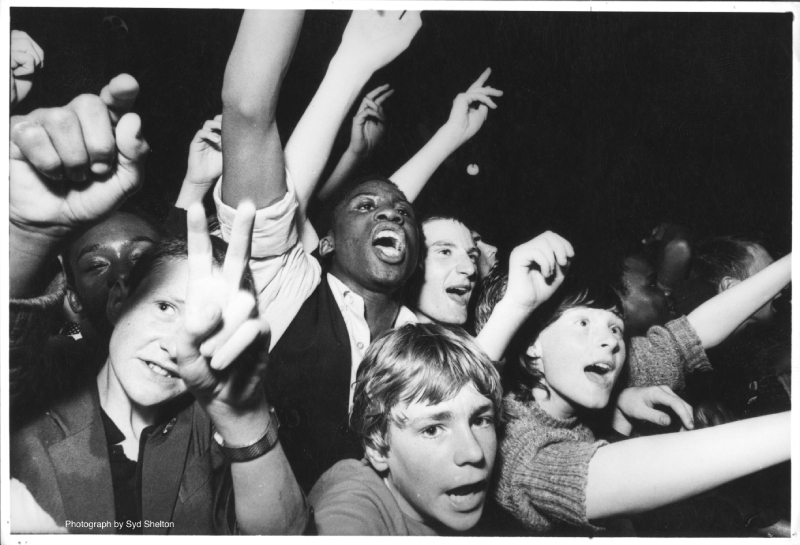People Power
Lewisham Suffragettes
You may have heard of Christabel and Emmeline Pankhurst who campaigned for women’s rights, but how about Rosa May Billinghurst? Born in Lewisham in 1875, she became paralysed after contracting polio as a child. But this didn’t stop her determination to fight for women’s rights. She defied social expectations of the time by campaigning and attending protests using a wheelchair in the lead up to the 1918 Parliament Act, which gave some women the right to vote. Like other Suffragettes she spent time in Holloway prison and took part in hunger strikes, but once released, continued to fight for the cause.

Image: LSE Library
Children’s Rights
Did you know the work of two sisters in 1800s and 1900s Deptford sparked a revolution in children’s rights and education across the UK? Margaret and Rachel McMillian campaigned for the rights of young children to be healthy, clean and well-fed, leading to major reforms. They started several experimental camp schools in Deptford in the early 1900s, including a camp school where girls could sleep overnight in the back garden and a boys camp where boys cooked and grew vegetables (but this later closed due to objections). Both these schools helped to support many families during the First World War. Margaret firmly believed in the mantra ‘educate every child as if they were your own’ and they went on to influence the play-centered approach to Early Years education, which is still used today.

Rock Against Racism
From 1976 to 1981 a movement across the UK – and particularly active in Lewisham – used music to inspire change. Gigs across the borough brought people from diverse backgrounds together to share a common joy for music and to take a stand against racist attacks. As the National Front started to gain traction in the UK in the 70s, Rock Against Racism’s mission was to fight fascism through live music. By putting black and white music artists on the same stages, organisers in Lewisham and beyond knew they’d bring communities together and encourage solidarity.

Image: Syd Shelton
Battle Of Lewisham
Lewisham residents of all ages and backgrounds – from families to teachers to church groups – took to the streets on 13 August 1977, to stop a far-right National Front march. After attempts to have this march banned in the high court by All Lewisham Campaign Against Racism and Fascism failed, the local communities weren’t going to stand for it. As residents created a wall of resistance, this momentous day showed the strength of collective community action, with ordinary people standing up for what they believed in. This event proved so powerful, it was the first time mainland British police had to use large riot police shields.

Image: Lewisham Local History and Archives
Black People’s Day of Action
A generation before Black Lives Matter, one of the most significant turning points in the struggle for racial equality began in the borough. On 2 March 1981, 20,000 people marched from the Moonshot Centre in New Cross, to central London to demand justice for the New Cross Fire – a racist attack that killed 14 young people. It was described as ‘the largest black demonstration’ in British History and was a pivotal moment in the black communities’ struggle for justice and civil rights in Britain.
Image: Lewisham Local History and Archives
Save Lewisham Hospital Campaign
In 2012, The Save Lewisham Campaign Group, supported by patients, community groups, GPs, hospital doctors, nurses and other health professionals came together to save Lewisham Hospital from drastic cuts to their vital services. In October 2012, 800 people joined the first public meeting and in November 2013, 15,000 joined the march through Lewisham. By January 2013, 25,000 people had joined the rally, making it the biggest march in south London in more than 20 years. On 29 October 2013, three judges found that the Government had acted unlawfully in trying to close down most of Lewisham Hospital’s services. To this day it is still proudly serving more 300,000 people in the borough.

Borough of Sanctuary
Home to diverse cultures and 170 spoken languages, Lewisham has a long history of welcoming people from all over the world. In 2021, we become the UK’s first Borough of Sanctuary in acknowledgement of our work to stand up for the rights of refugees. On 22 October 2021, Little Amal, a 3.5-metre puppet representing a nine-year-old Syrian girl, was welcomed to Deptford by Lewisham residents and school children, as part of her epic 8000km journey that took her to the Turkish-Syria border and right across Europe in recognition of the plight of refugees.

Climate Activism
In 2019, Lewisham was one of the first London boroughs to declare a climate emergency. With this declaration is the pledge to work towards being Carbon Neutral by 2030. By drastically cutting carbon emissions and focusing on more sustainable programmes, such as sustainable housing, we believe we can get there.
We’re also proud to be one of London’s greenest boroughs! As well as large green spaces like Beckenham Place Park, we have a huge number of community-led garden projects. The importance of connecting communities with green spaces was not lost on Octavia Hill, one of the three founders of the National Trust. When plans were announced to build over Hilly Fields in the second half of the 19th century, Octavia was instrumental in helping local people set up a campaign to save the land as a public park. As a result, the land was purchased by London City Council and dedicated to the public on 16 May 1896.
